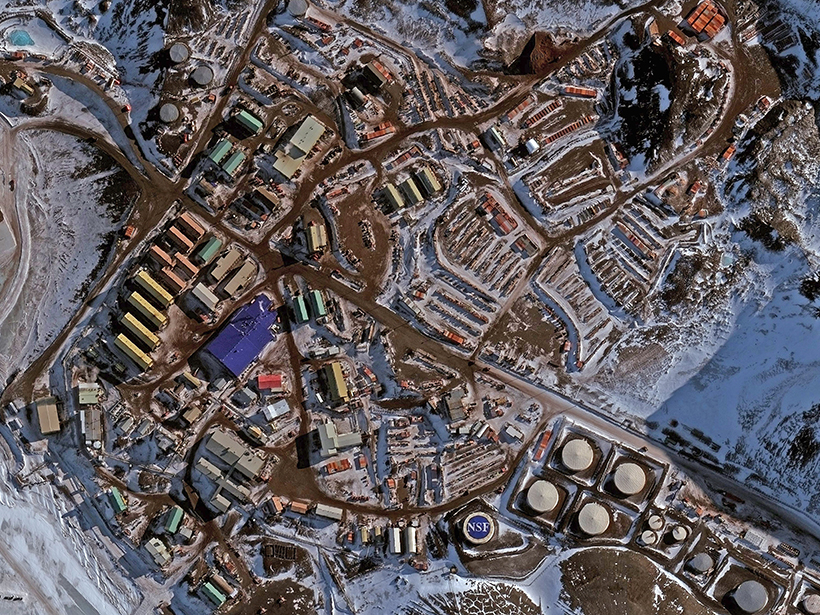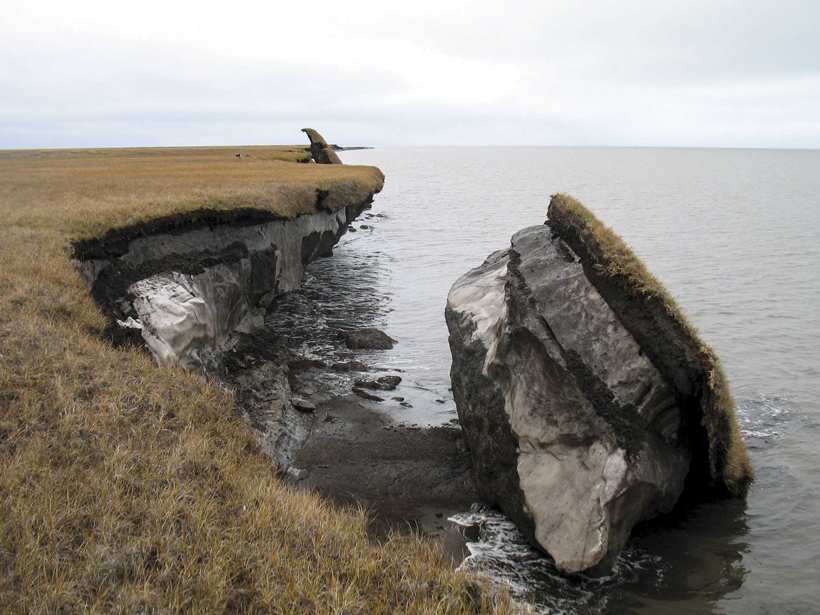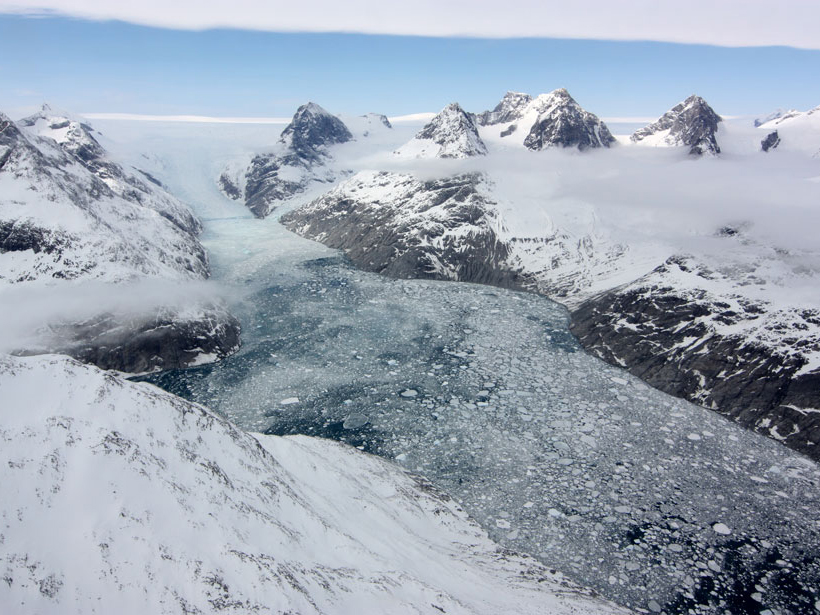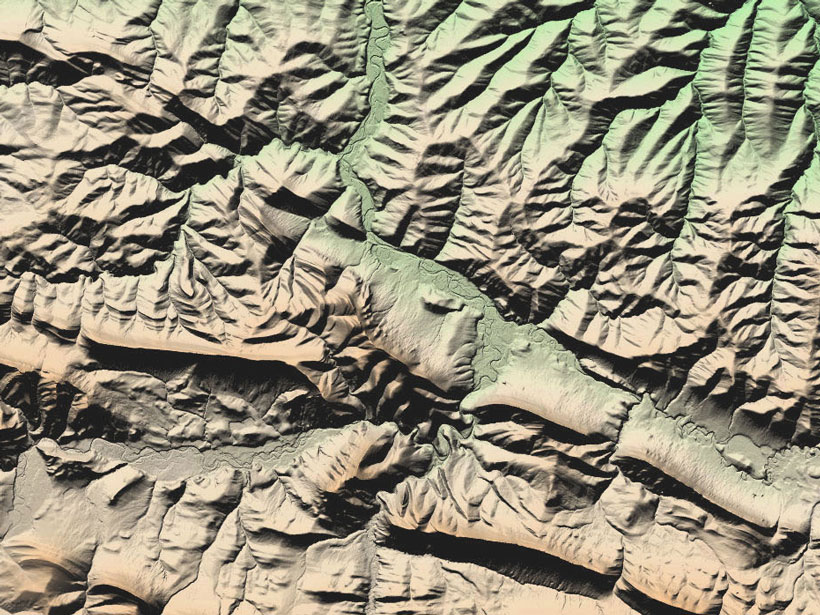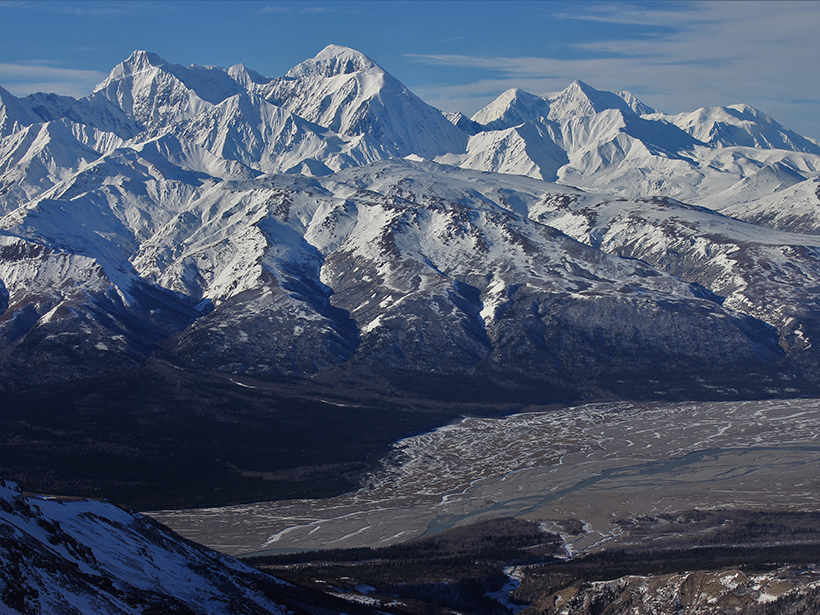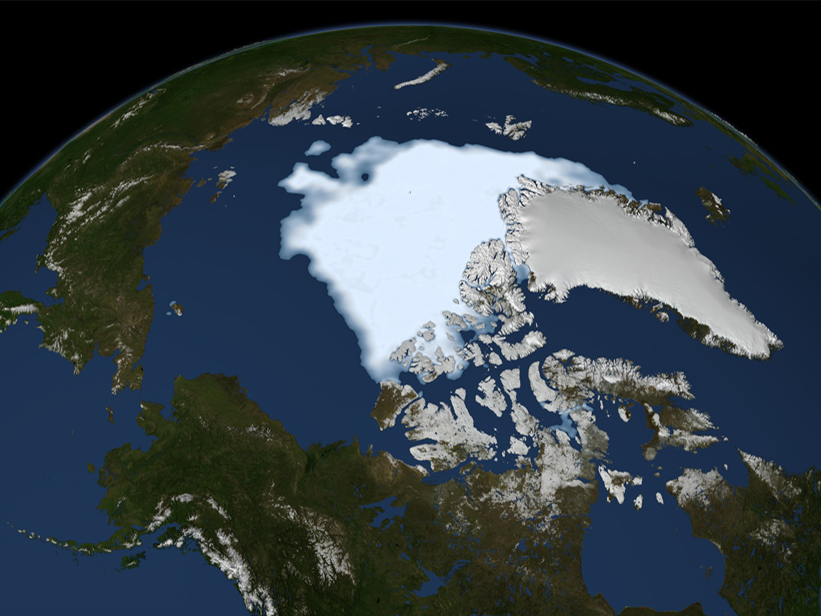The budget features significant funding for polar region science, including efforts to document and understand rapid changes in the Arctic and to modernize Antarctic infrastructure.
Arctic
Arctic Is Experiencing a Warmer “New Normal,” NOAA Reports
The acting head of the National Oceanic and Atmospheric Administration, Timothy Gallaudet, says the Trump administration is addressing the findings of the agency’s latest annual update on the Arctic.
Reducing Errors in Satellite-Derived Arctic Sea Ice Thicknesses
Salty snow throws off satellite-based estimates of Arctic sea ice thickness by up to 25%. A new method seeks to fix that.
Satellites Accurately Capture Ocean Salinity in the Arctic
On-the-ground measurements are notoriously difficult in the harsh environment of the Arctic, but satellites could help close the gap in measuring sea surface salinity.
Map Provides High-Resolution Look at Nearly Entire Arctic Region
Researchers highlight the value of the time element incorporated into imagery and having a baseline for revisiting and comparing topography.
Airborne Platforms Help Answer Questions in Polar Geosciences
International Workshop on Airborne Geodesy and Geophysics with Focus on Polar Applications; Dresden, Germany, 19–21 April 2017
Why Are Arctic Rivers Rising in Winter?
Increased glacial melt is boosting winter streamflows by filling aquifers, a new study on an Alaskan river suggests.
Engineering New Foundations for a Thawing Arctic
Researchers experiment with new building supports to prepare the Arctic for rapid shifts in permafrost and ground stability.
New Baseline for Understanding Arctic Oxygen and Nutrient Fluxes
Significant spatial and temporal patterns emerge from the first pan-Arctic comparison of oxygen demand in marine sediments.
Tracking Nitrogen in Arctic Plants
Prevailing nutrient uptake models do not fit Arctic plants. Scientists test a new option that overcomes older models’ shortcomings.

